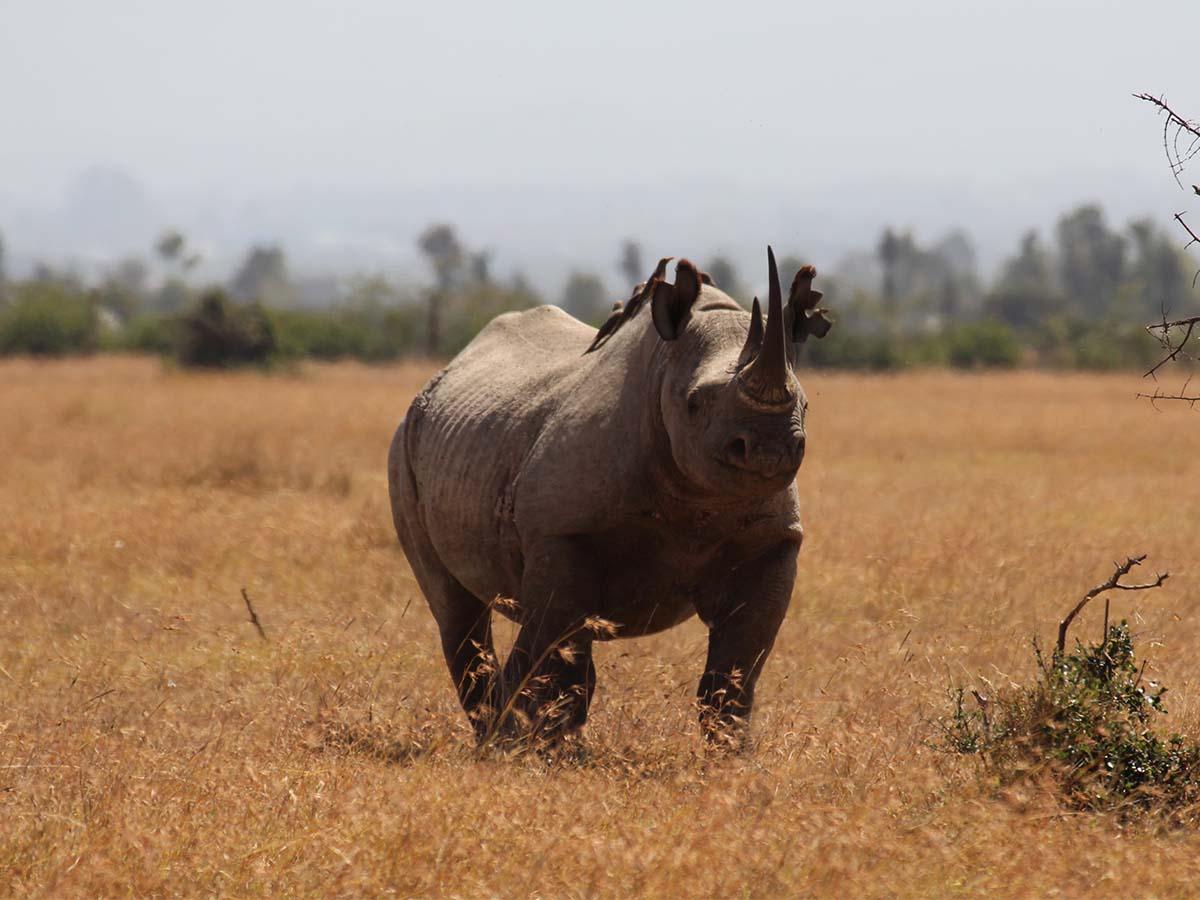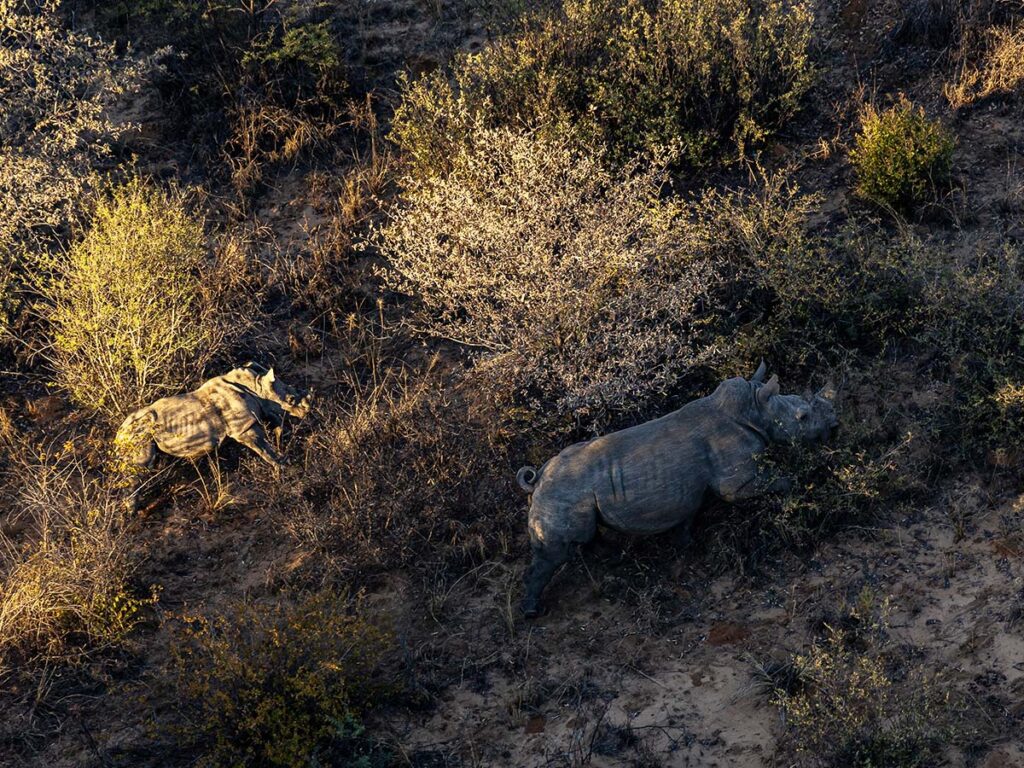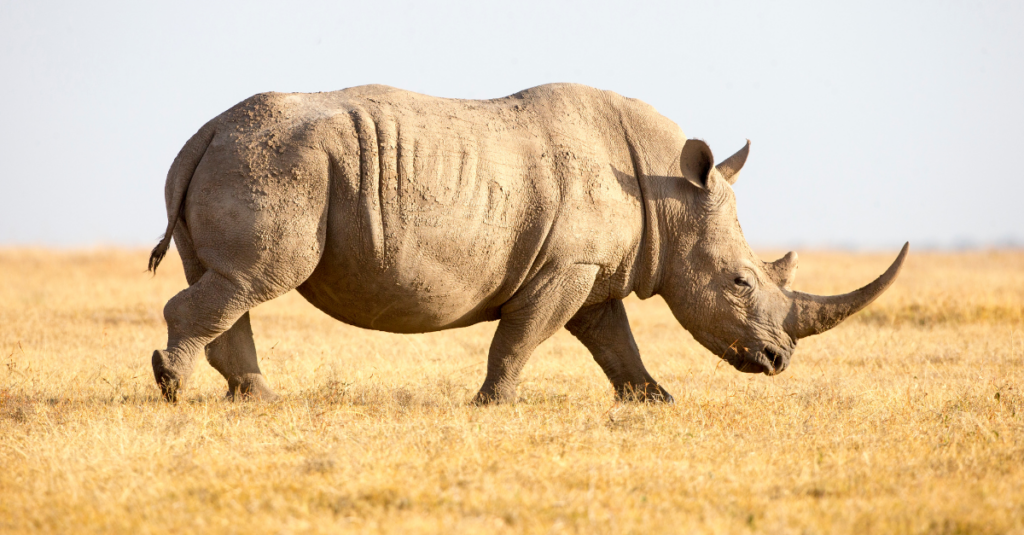Rhinos at Risk: How the U.S. Government Funding Freeze Impacts Wildlife

The U.S. government provides funding for conservation-related work through several agencies, each supporting different aspects of wildlife protection, habitat preservation and anti-trafficking initiatives. But since January 2025, almost all U.S. government foreign aid and conservation grant programs have been frozen.
The funding agencies include:
- U.S. Fish and Wildlife Service (USFWS)
- United States Agency for International Development (USAID)
- U.S. Department of State-Bureau of International Narcotics and Law Enforcement Affairs (INL)
In addition, the U.S. Forest Service is active in international forestry programs and the Departments of Justice and Homeland Security provide support for wildlife trade law enforcement.
With the funding frozen, agencies including USFWS, USAID and the State Department’s INL Bureau have issued stop-work orders for all active grants, effectively halting ongoing conservation projects. All open funding opportunities for new initiatives have been canceled.

What does this mean for rhino conservation?
The International Rhino Foundation (IRF) and its conservation partners have been significantly impacted by the recent halt in U.S. government funding, which previously accounted for 12 to 15 percent of IRF’s annual budget. This freeze has led to a projected loss of nearly $1 million for IRF over the next three years, with critical programs in Indonesia and Zimbabwe already affected. Rhino monitoring, security, forest restoration and community economic development efforts are now at risk, threatening decades of conservation progress.
To date, 14 of the 19 reserves and organizations IRF supports have reported severe program disruptions, with our conservation partners in multiple countries facing funding cuts of up to 50 percent. Layoffs, reduced patrols and canceled ranger training programs have left rhino populations increasingly vulnerable to poaching. In Namibia and South Africa, essential interventions like dehorning at-risk rhinos have been scaled back due to a lack of resources. Without immediate funding solutions, these setbacks will weaken enforcement efforts, disrupt intelligence operations and increase poaching pressure, undermining years of hard-earned conservation gains.
“This funding freeze could have severe consequences for rhino conservation efforts and result in the direct deaths of rhinos worldwide,” said Nina Fascione, IRF’s Executive Director. “We’re working quickly to offset the loss of resources and ensure these majestic animals are protected for future generations to experience.”
Over the next three to five years, the lack of financial support may lead to:
- Rising Poaching Risks – Weakened security measures due to reduced funding for monitoring, patrols and law enforcement may leave rhinos more vulnerable to poachers.
- Threats to Habitat Protection – Conservation programs focused on forest restoration and ecological research may be forced to scale back, leading to habitat degradation, increased human encroachment and biodiversity loss.
- Community and Economic Struggles – Many U.S.-funded initiatives provide sustainable livelihoods for communities near rhino habitats. Without this support, locals may turn to unsustainable practices, including wildlife trafficking, for survival.
- Loss of Scientific Research – Funding cuts could halt crucial research on rhino populations, genetics and disease prevention, reducing conservationists’ ability to implement effective protection strategies.
- Political and Social Instability – In regions already facing unrest, reduced conservation funding could drive poverty, displacement and organized crime, further threatening rhino populations.
- Long-Term Rhino Population Declines – Without adequate conservation efforts, critically endangered rhino species may face severe population drops, setting back global conservation progress for decades.

What is IRF’s Response?
IRF is taking immediate action to minimize the impact on rhino conservation. To ensure continued protection for rhinos and the communities that depend on conservation efforts, IRF is implementing the following strategies:
- Assessing Impact – IRF surveyed grantees and partners to evaluate the direct and indirect effects of funding cuts, prioritizing urgent needs.
- Identifying Funding Gaps – We are analyzing shortfalls and critical risks to determine which programs need immediate support.
- Reallocating Resources – IRF is strategically shifting internal funds to sustain anti-poaching and security efforts.
- Prioritizing Security & Communities – We aim to keep rhino protection efforts running while minimizing harm to vulnerable communities.
- Expanding Fundraising – To offset losses, we are engaging donors, foundations, zoos and corporate partners, while collaborating with NGOs to maximize support.
How can you help?
With your support, we can fill the funding gap and ensure rhinos remain protected.
Your donation will help:
✅ Keep anti-poaching patrols in place to safeguard rhinos from illegal hunting.
✅ Support local communities that play a vital role in conservation efforts.
✅ Restore and protect rhino habitats from deforestation and human encroachment.
✅ Fund critical research to ensure the survival of endangered rhino species.
Consider becoming a monthly donor today to provide sustained support for rhino conservation during this critical time. Your ongoing commitment will help ensure long-term protection for rhinos, strengthen anti-poaching efforts and safeguard vital habitats.
Together, we can keep conservation progress moving forward.
